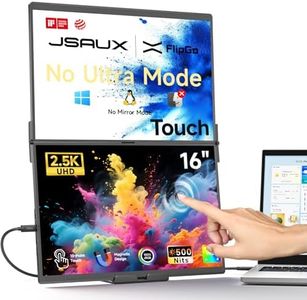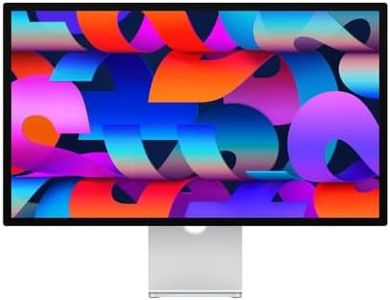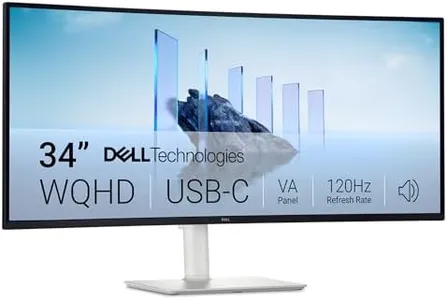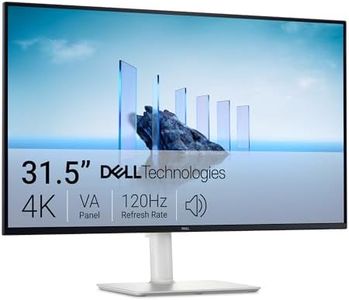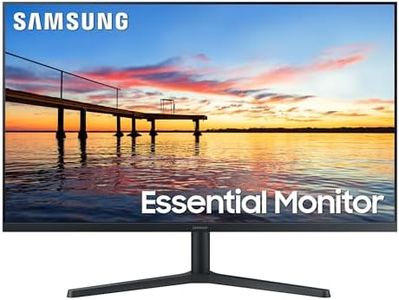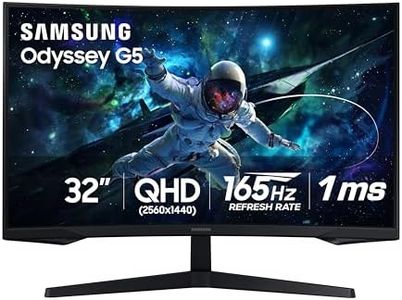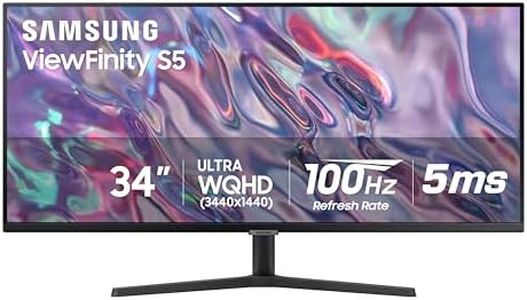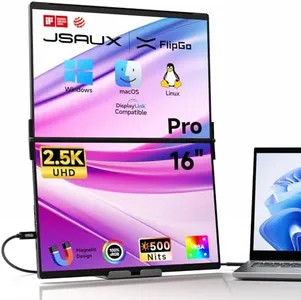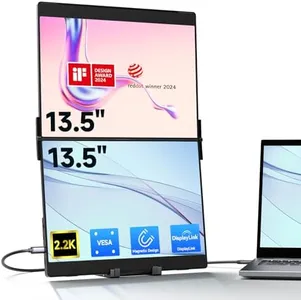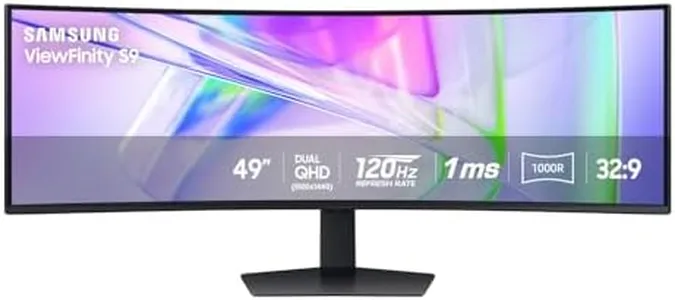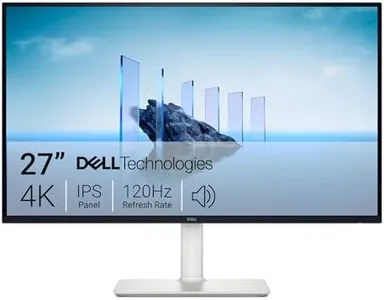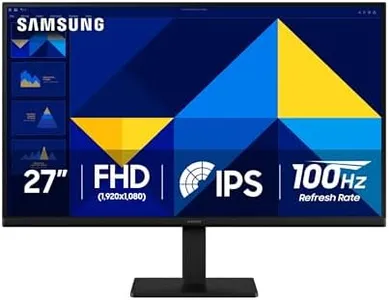10 Best Computer Monitors 2025 in the United States
Our technology thoroughly searches through the online shopping world, reviewing hundreds of sites. We then process and analyze this information, updating in real-time to bring you the latest top-rated products. This way, you always get the best and most current options available.

Our Top Picks
Winner
Apple Studio Display - Standard Glass - Tilt-Adjustable Stand
Most important from
54 reviews
The Apple Studio Display is a premium 27-inch monitor boasting a sharp 5K Retina resolution (2880p) that delivers incredibly crisp visuals, ideal for photo editing, design, and detailed work. Its 600 nits brightness ensures the screen remains vibrant and clear even in well-lit rooms. The display supports over one billion colors with P3 wide color gamut, making it excellent for accurate and rich color reproduction. The aspect ratio is the common 16:9, suitable for most video content and everyday use.
Connectivity includes one Thunderbolt 3 port and three USB-C ports, offering good flexibility for Mac users, plus it can provide 96W of power to charge your MacBook, reducing cable clutter. Additional perks include a built-in 12MP Ultra Wide camera with Center Stage for improved video calls, a six-speaker audio system with Spatial Audio, and a high-quality three-mic array, making it a great all-in-one solution beyond just a monitor. The screen has a glossy finish, which can cause reflections in bright environments; Apple also offers a nano-texture glass option to reduce glare if needed.
The stand is tilt-adjustable, but other ergonomic adjustments like height or swivel are not mentioned. This monitor suits creative professionals and Mac users who want a visually stunning display with excellent color accuracy and integrated multimedia features, rather than gamers or users seeking extensive ergonomic flexibility.
Most important from
54 reviews
Dell 34 Plus USB-C Curved Monitor - S3425DW - 34-inch (3440 x 1440) up to 120 Hz 21:9 Display, VA Panel, AMD FreeSync Premium, 99% sRGB, 95% DCI-P3, Integrated Speakers, 3000:1 Contrast Ratio
Most important from
988 reviews
The Dell 34 Plus USB-C Curved Monitor (S3425DW) is a great choice if you're looking for a large, immersive display for both work and entertainment. Its 34-inch screen with a 21:9 ultra-wide aspect ratio offers plenty of space for multitasking or enjoying movies without black bars. The resolution of 3440 x 1440 (often called 1440p) provides sharp images and clear text, which is a nice step up from regular HD. The VA panel delivers deep blacks and a high contrast ratio of 3000:1, making colors look rich and detailed, especially with its HDR readiness. Speaking of colors, it covers 99% of the sRGB and 95% of the DCI-P3 color spaces, so you can expect vibrant and accurate colors, which is useful if you do any photo or video editing or simply want good image quality.
The 120Hz refresh rate combined with AMD FreeSync Premium support means smoother motion during fast-moving scenes, whether gaming or watching videos, and the very fast 0.03ms response time helps reduce blurring. Connectivity is straightforward, especially with USB-C that can also power your laptop, helping to keep cables tidy. The curved screen adds comfort by reducing eye strain, and Dell’s ComfortView Plus feature lowers harmful blue light without dulling colors. Integrated speakers have been improved for better sound quality, but they might not replace a dedicated audio setup if you want rich, immersive sound.
The use of a VA panel sometimes results in slower viewing angles and less brightness compared to IPS panels, but it should be fine for most indoor use. This monitor suits professionals needing extra screen space, casual gamers, and anyone wanting a visually pleasing, versatile display.
Most important from
988 reviews
Dell 32 Plus 4K Monitor - S3225QS - 31.5-inch 4K (3840 x 2160) up to 120Hz 16:9 Display, VA Panel, AMD FreeSync Premium, 99% sRGB, 95% DCI-P3, 1500:1 Contrast Ratio, Comfortview Plus - Ash White
Most important from
988 reviews
The Dell 32 Plus 4K Monitor (S3225QS) is a solid choice if you want a large, detailed display with sharp 4K resolution on a 31.5-inch screen. Its VA panel offers deep contrast (1500:1), making dark scenes look rich and vibrant, which is great for movies and general use. The 16:9 aspect ratio is standard and fits most content well. With a refresh rate up to 120Hz and AMD FreeSync Premium, this monitor can handle smoother motion than typical 60Hz screens, which helps reduce screen tearing in games or fast-moving visuals. The response time is extremely fast (0.03ms), which further improves motion clarity, although VA panels usually have slightly slower response times than IPS panels, which might affect very fast gaming slightly.
Color coverage is strong, with 99% sRGB and 95% DCI-P3, meaning colors look accurate and vibrant—ideal if you do photo or video editing or just want pleasing visuals. The ComfortView Plus feature reduces blue light, making it easier on your eyes during long use without dulling the colors. VA panels can have narrower viewing angles compared to IPS types, so colors may shift if you’re not looking straight at the screen. HDR readiness suggests decent peak brightness, though not necessarily top-tier HDR performance.
The monitor’s design is stylish with very thin bezels and a clean ash white color, fitting well in modern workspaces. It also includes improved built-in speakers with better sound quality than previous models, making it more versatile if you don’t want external speakers. This monitor is well suited for users looking for a large, sharp, and color-accurate screen for mixed tasks like entertainment, casual gaming, and creative work without needing a very specialist gaming or professional-grade display.
